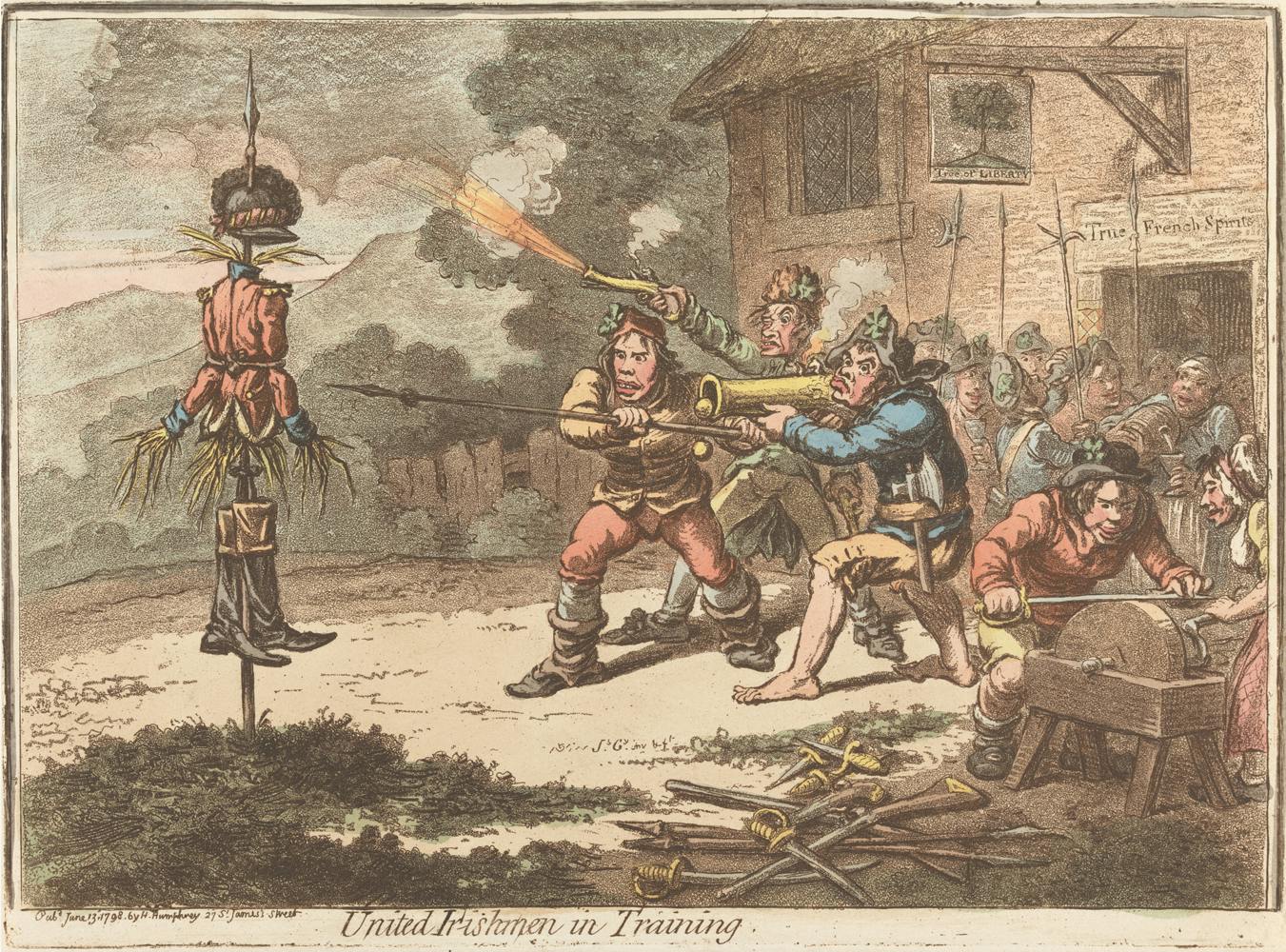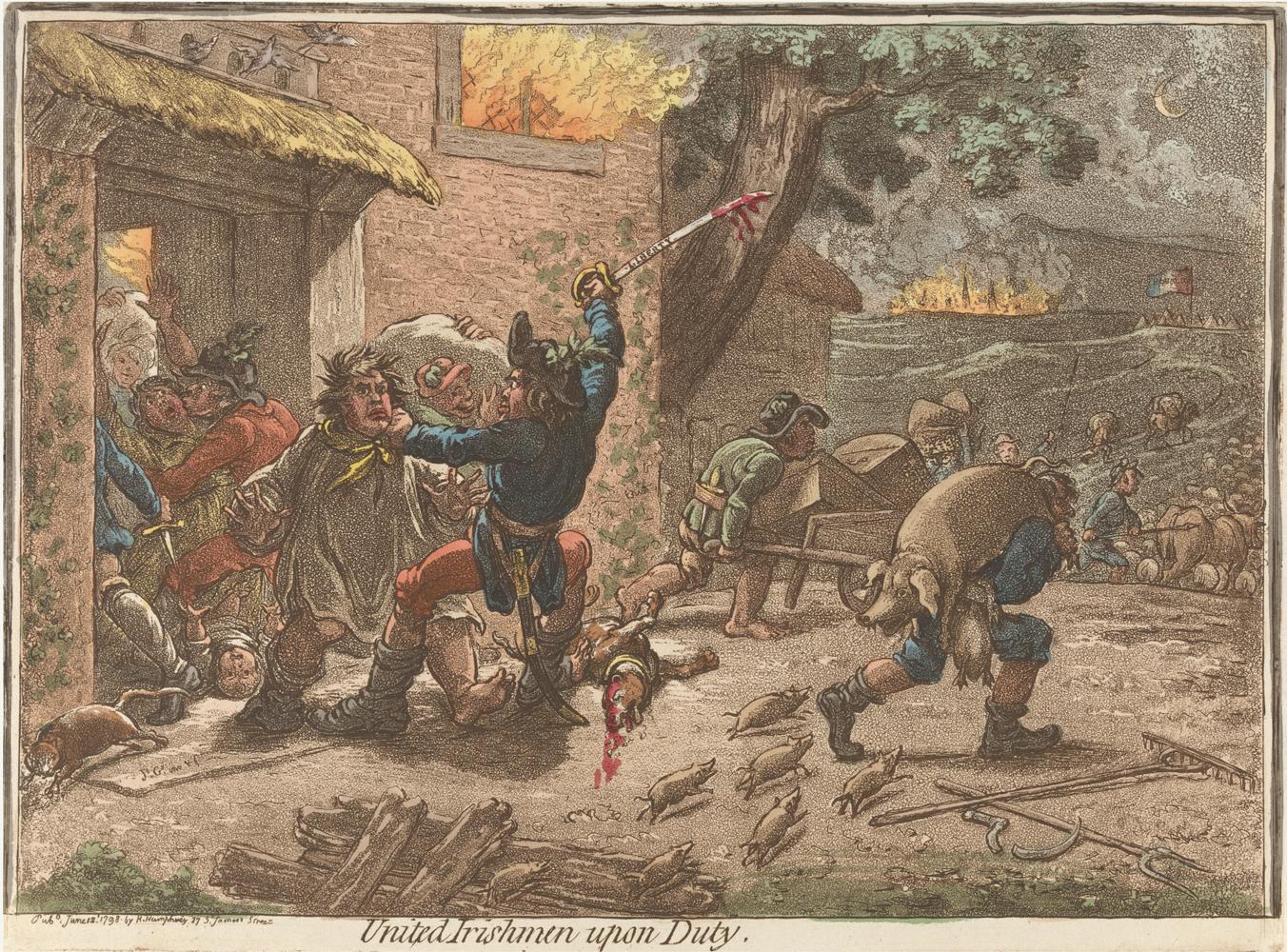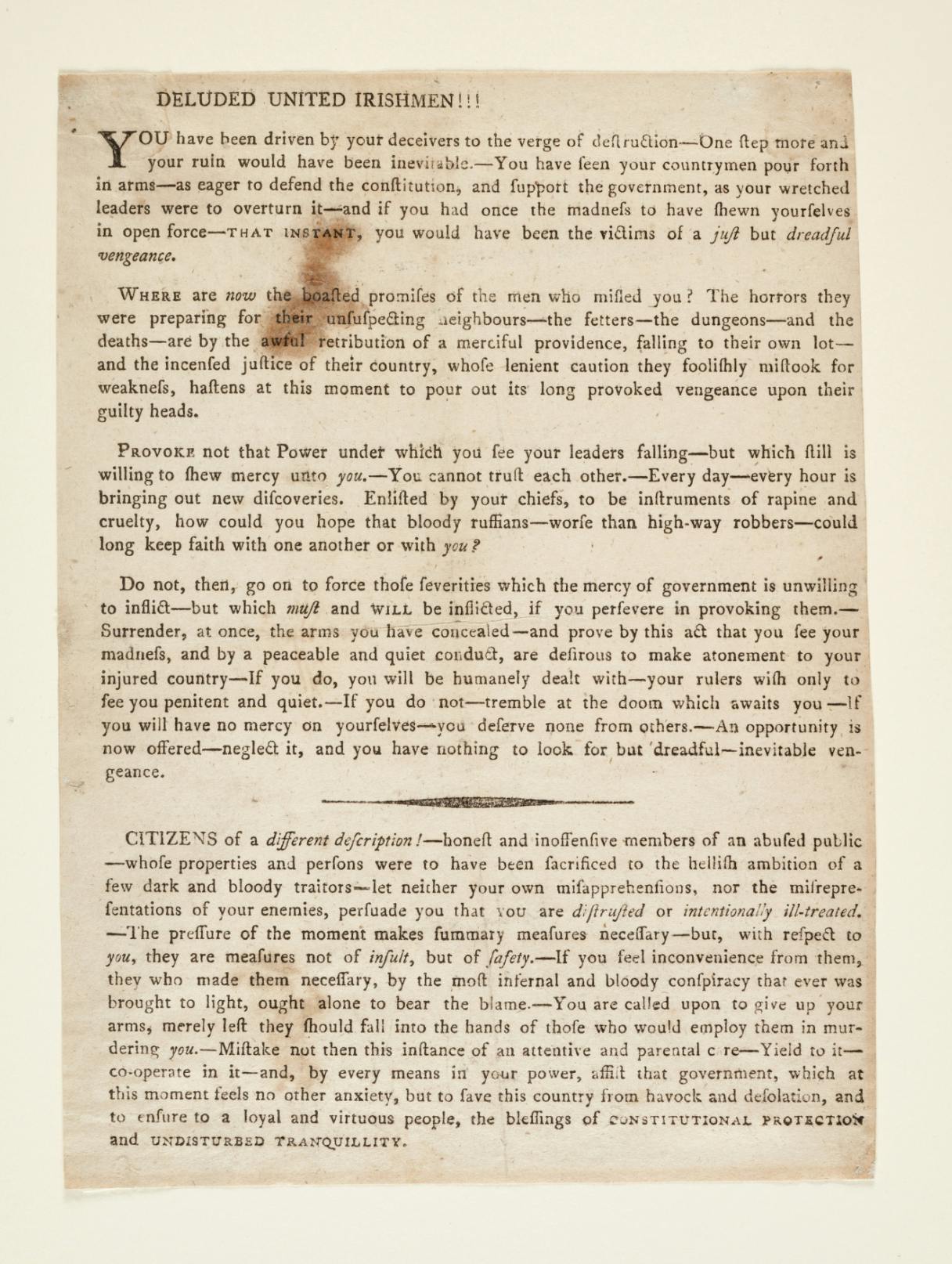


Condemning the United Irishmen
Satire of the United Irishmen
British cartoonist James Gillray’s prints spread negative opinions of the United Irishmen to the British public. He depicted the United Irishmen as violent looters and pillagers instead of principled revolutionaries. Gillray included back-handed references to the French influence on the United Irishmen. “United Irishmen in Training” is set in front of a tavern where the Irishmen could drink the “True French Spirits” under a sign decorated with a liberty tree.
United Irishmen in Training
Drawn by James Gillray
June 13, 1798
Etching, Aquatint, Watercolor
Yale Center for British Art, Paul Mellon Collection
Satire of the United Irishmen
British cartoonist James Gillray’s prints spread negative opinions of the United Irishmen to the British public. In “United Irishmen Upon Duty,” Gillray depicted the United Irishmen as violent looters and pillagers instead of principled revolutionaries. He also included back-handed references to the French influence on the United Irishmen, such as the French flag flying over an encampment in the background.
United Irishmen Upon Duty
Drawn by James Gillray
June 12, 1798
Etching, Aquatint, Watercolor
Yale Center for British Art, Paul Mellon Collection
Deluded United Irishmen
The Irish government distributed printed notices, such as this example, that demanded the surrender of the United Irishmen. If the United Irishmen did not give up, the government warned that they should “tremble at the doom which awaits you.” Five months of bloodshed between the Irish Revolutionaries and the British Army and its loyal Irish allies tore the country apart.
Broadside
1798
Paper, Ink
© National Museum of Ireland